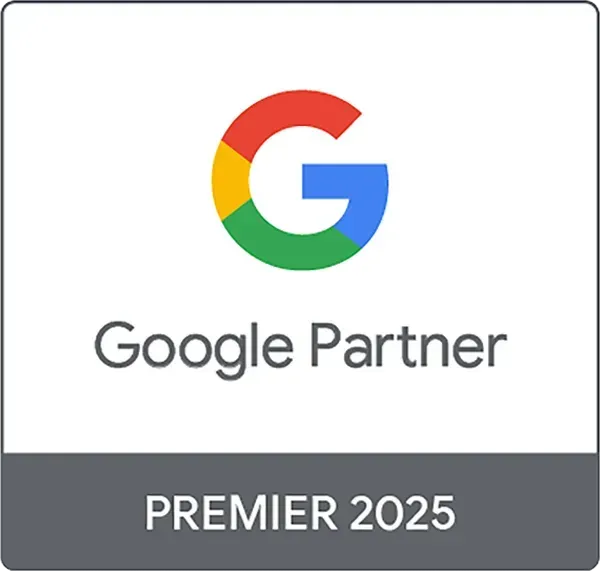Technology isn’t just evolving, it’s accelerating. And in marketing, that pace is impossible to ignore.
One of the most significant shifts we are seeing today is the rise of generative AI in how consumers search, ask questions, and make decisions. Tools like ChatGPT, Gemini, Copilot, and Google’s AI Overviews are changing the way people discover information. Instead of browsing through a list of links, users now receive direct answers. This behavior is reshaping the way brands need to show up online. If your strategy relies only on traditional SEO, you are missing a critical part of the picture.
This blog by Dayta will help you understand:
- What is Generative Engine Optimization (GEO)?
- What is the difference between GEO and SEO?
- Why does GEO matter for marketers?
- What are the best practices for generative engine optimization?
- How should marketers integrate GEO into their content strategy?
What Is Generative Engine Optimization?
Generative Engine Optimization, or GEO, is the strategic practice of optimizing your content to appear in AI-generated responses rather than relying solely on traditional search listings.
Unlike SEO or SEM, which are designed to boost your rankings in search engine results, GEO focuses on becoming the answer itself. When someone asks a question using tools powered by large language models (LLMs) such as ChatGPT, Google Gemini, or Microsoft Copilot, those tools do not return a list of links. They generate direct responses by pulling from trusted, well-structured sources.
A study conducted by
Attest discovered that nearly 41% of consumers trust AI search results over sponsored results. So when your brand appears in these responses, people don’t just notice it—they trust it. You become the source that helps someone make a confident decision before visiting your website.
What is the Difference Between GEO and SEO?
GEO differs from SEO in one key way: while SEO focuses on improving your website’s position in search engine rankings within Google or Bing search results, GEO is about making your content discoverable by Generative AI tools that provide direct answers. Instead of optimizing for clicks, GEO positions your brand to be cited or referenced within AI-generated responses. This requires a shift in strategy, emphasizing clarity, authority, and structure so that large language models (LLMs) can easily understand and surface your content during search queries.
Why Does GEO Matter for Marketers?
The way consumers discover brands is shifting fast. People are no longer relying solely on traditional search engines to find answers. Instead, they ask conversational questions and turn to AI tools for answers, to compare options, and to make informed decisions without ever clicking on a website.
According to the
Consumer Adoption of AI Report, 30% of consumers now use generative AI tools to research products or services. That number is only growing. This represents a major shift in how people discover information. Visibility is no longer just about ranking. It is about being recognized and referenced by the AI tools your customers are already using. In short, this is where your audience is. If your brand is not showing up in these spaces, you are missing critical touchpoints in the customer journey. Here’s why it matters:
- Your customers are already using AI tools to make decisions.
Generative AI is now part of how people shop, search, and solve problems.
- Traditional SEO is still essential, but it is no longer enough.
Ranking on Google still matters, but it does not guarantee visibility in AI-generated responses.
- GEO helps you appear in the answers, not just the listings.
Generative AI tools summarize and cite content. If you are not part of the summary, you are not part of the conversation.
- Visibility in AI results builds credibility and trust.
When AI tools pull from your content, it positions your brand as a reliable source.
- Missing from generative results means missing key moments of influence.
Discovery now happens through conversations with AI. If your content is not part of those conversations, your brand is invisible when it matters most.
- Being included in AI responses gives you a competitive edge. Early adopters of GEO are gaining attention and market share while others lag behind.
What Are the Best Practices for Generative Engine Optimization?
To earn a place in AI-generated responses, your content needs to do more than just exist; it needs to be helpful, clear, and trustworthy. Generative AI tools favor structured, specific content designed to answer real questions with depth and clarity. The good news is that what works for AI also works for people. These same practices enhance your traditional SEO by improving relevance, readability, and overall content quality. Below are the key strategies that will help AI discover and cite your content while continuing to perform well in search.
- Create Clear, Helpful Content. Start by answering the questions your audience is actually asking. Use natural language. Think FAQs, how-to guides, and in-depth explainers. Clarity and usefulness always win. Avoid keyword stuffing or vague content. Focus on depth, not fluff.
- Structure Content for Easy Interpretation. Use subheadings, bullet points, and short paragraphs. Highlight key points at the top of your content. AI tools rely on structure to understand and summarize information. The easier your content is to parse, the more likely it will be used.
- Build Trust Through Relevance and Credibility.
Share real customer stories. Use examples from your work. Speak directly to the challenges your audience is facing. Adding expert insights or unique perspectives also helps you stand out. Trust is earned through relevance.
- Keep Content Current. Review your top-performing content regularly. Update stats, add new examples, and adjust based on what your audience is searching for. Being active and timely signals to AI engines that your content is worth including.
- Test and Observe AI Result. Act like your audience. Ask AI tools the same questions they would. See how your brand appears—or does not. Use what you learn to improve content gaps, adjust tone, or refine messaging. It is an ongoing feedback loop.
How Should Marketers Integrate GEO into Their Content Strategy?
Generative Engine Optimization is not a one-time fix. It should be built into your ongoing content strategy, evolving alongside how AI tools surface and interpret information. Staying visible means staying active.
- Start by identifying the key questions your audience is asking. Build a list using customer conversations, sales team insights, and search data. Then, develop content that answers those questions clearly and thoroughly. Think in formats AI can easily digest: FAQs, how-to guides, and concise explainers with clear takeaways.
- Next, build GEO into your editorial planning. Add a column in your content calendar to flag opportunities for AI relevance. Structure each piece with subheadings, summaries, and bullet points to improve AI readability. Prioritize clarity and intent over keyword density.
- Finally, review how your content shows up in AI tools. Ask common customer questions on platforms like ChatGPT or Google Gemini. Note whether or not your brand appears. If it does not appear, analyze what is missing and optimize accordingly. Track your updates, review performance quarterly, and treat GEO as a living part of your strategy, not a siloed task.
Partner with Dayta for GEO Expertise!
Generative AI is changing how people find and engage with brands. If you are not optimizing for it, you are falling behind. The good news is that you do not need to be a tech expert. You just need to be intentional about the content you create and how you position it. Start by focusing on clarity, structure, trust, and relevance. Then build GEO into your strategy from the ground up.
Want help staying visible in the age of AI? Explore Dayta’s campaign services to learn how we can guide your team through the shift and keep your brand at the forefront!
Share This Post
Our Recent Posts





